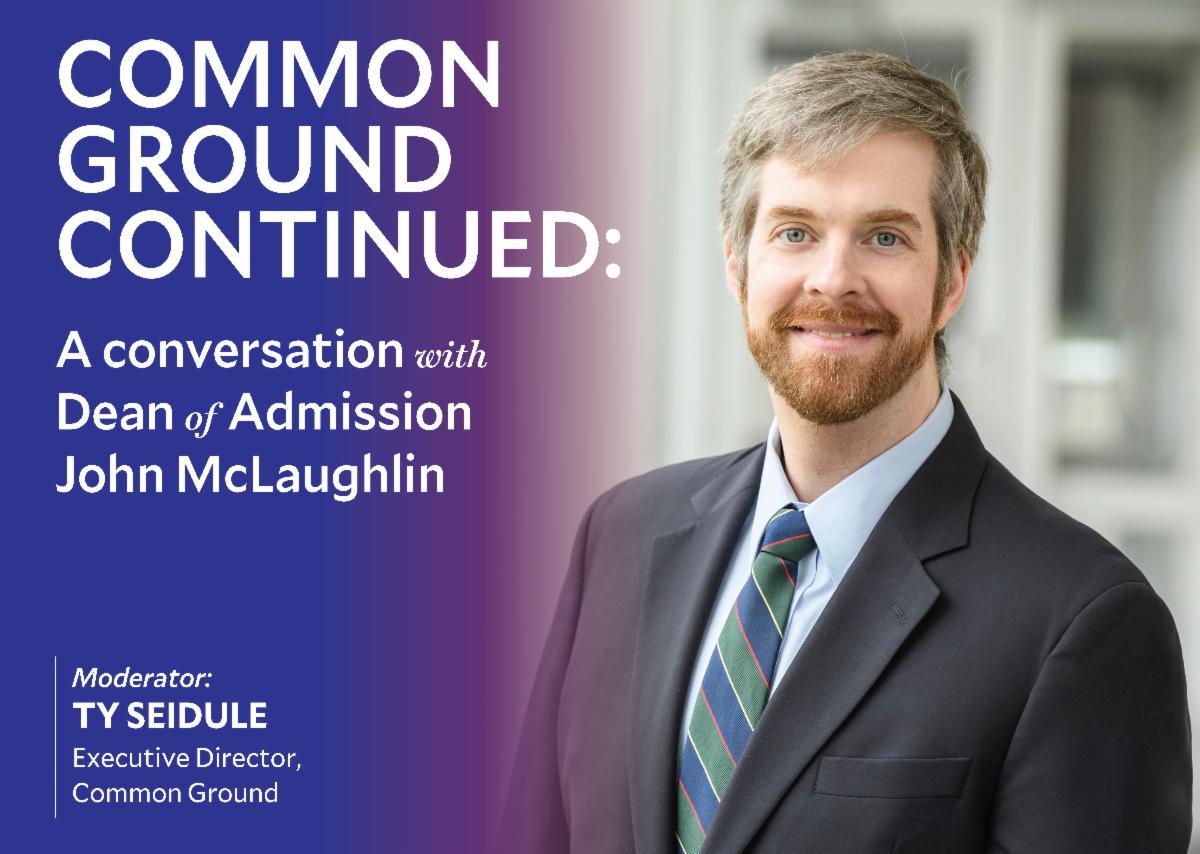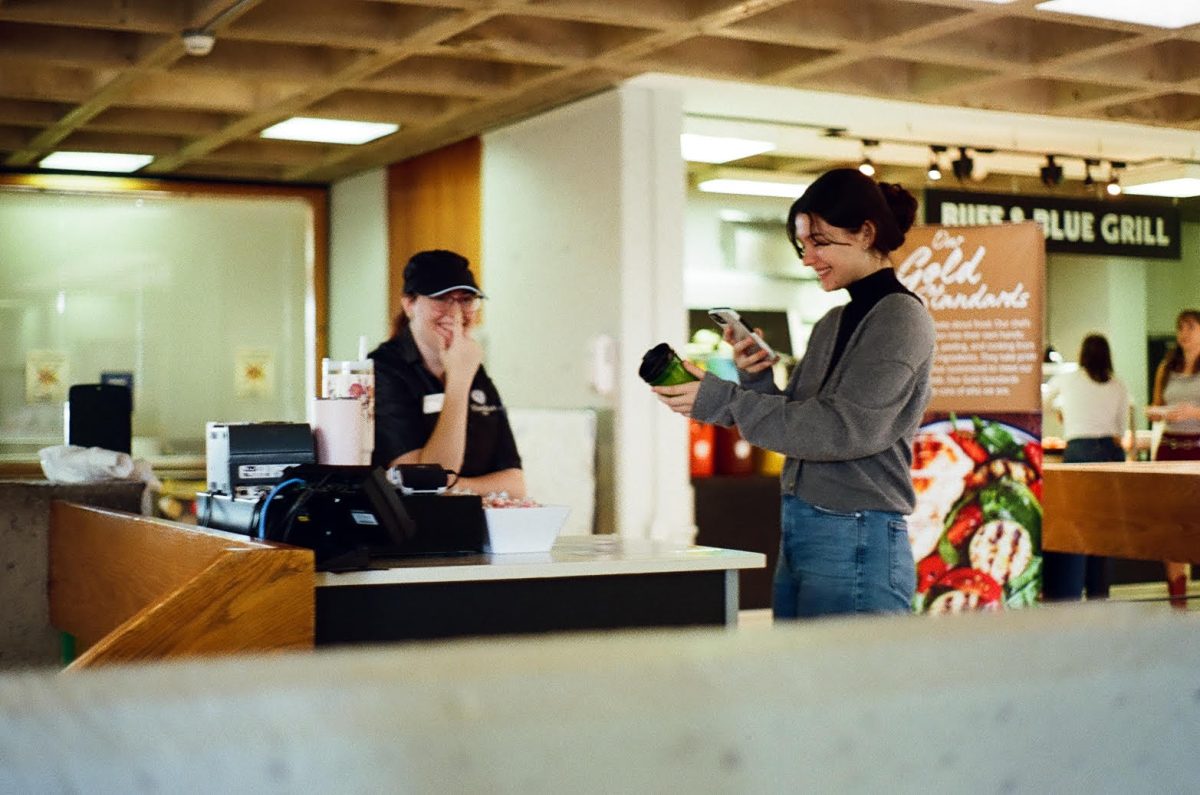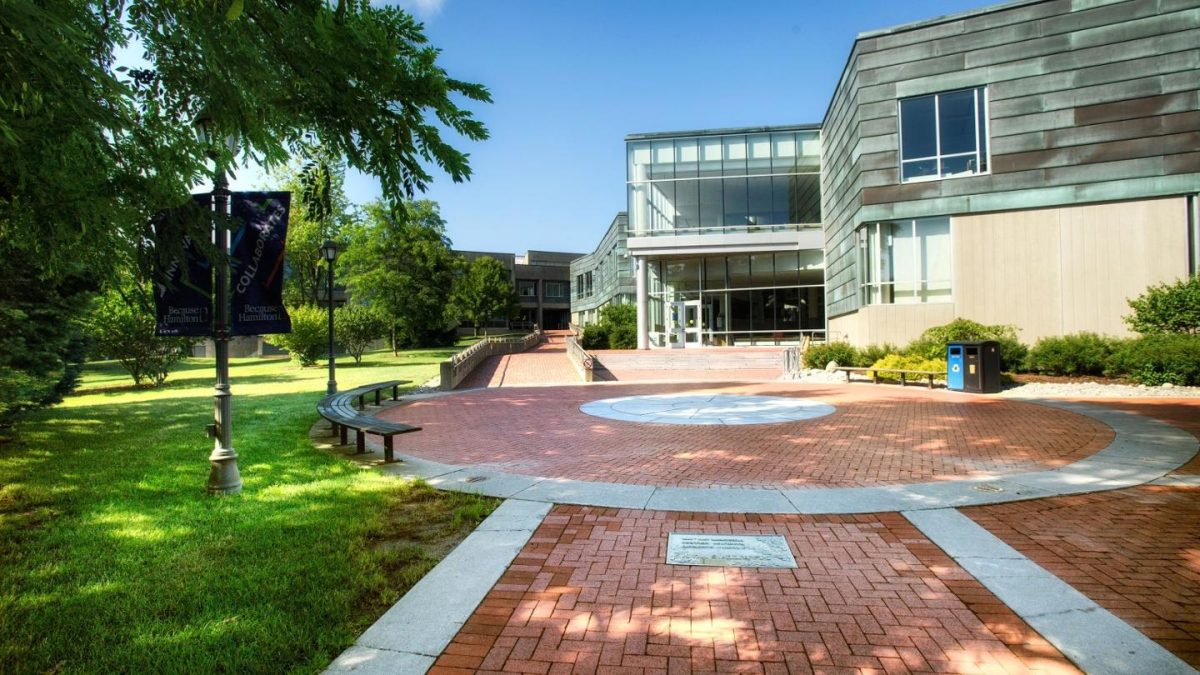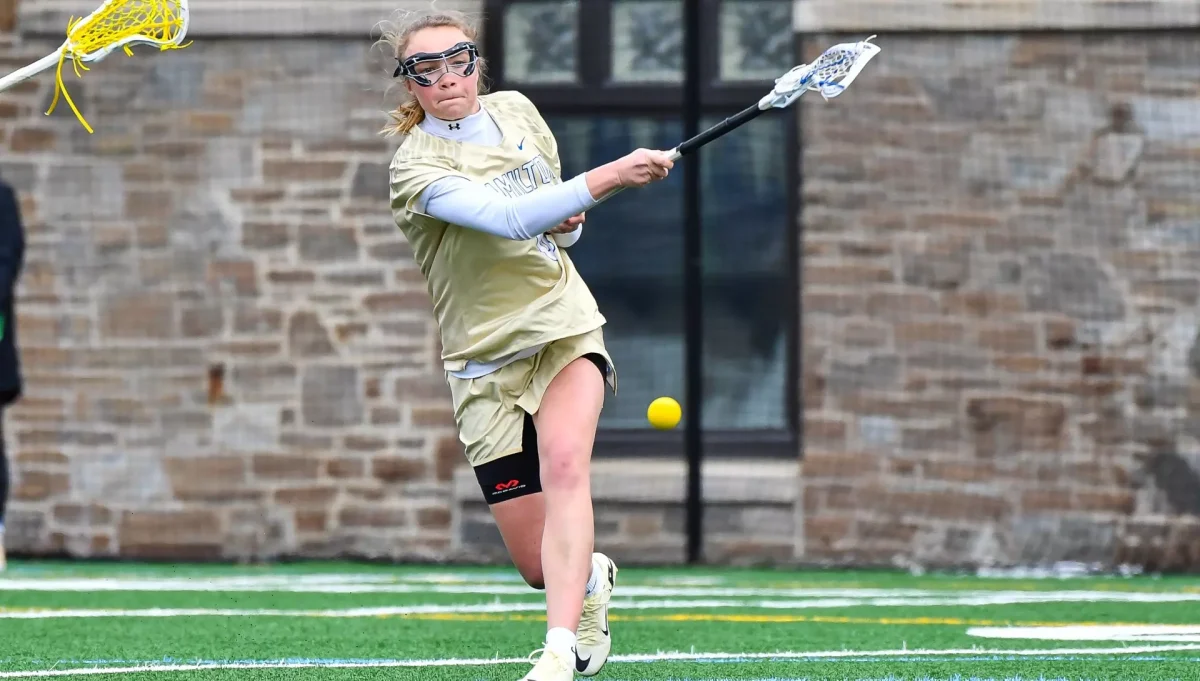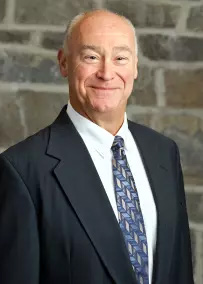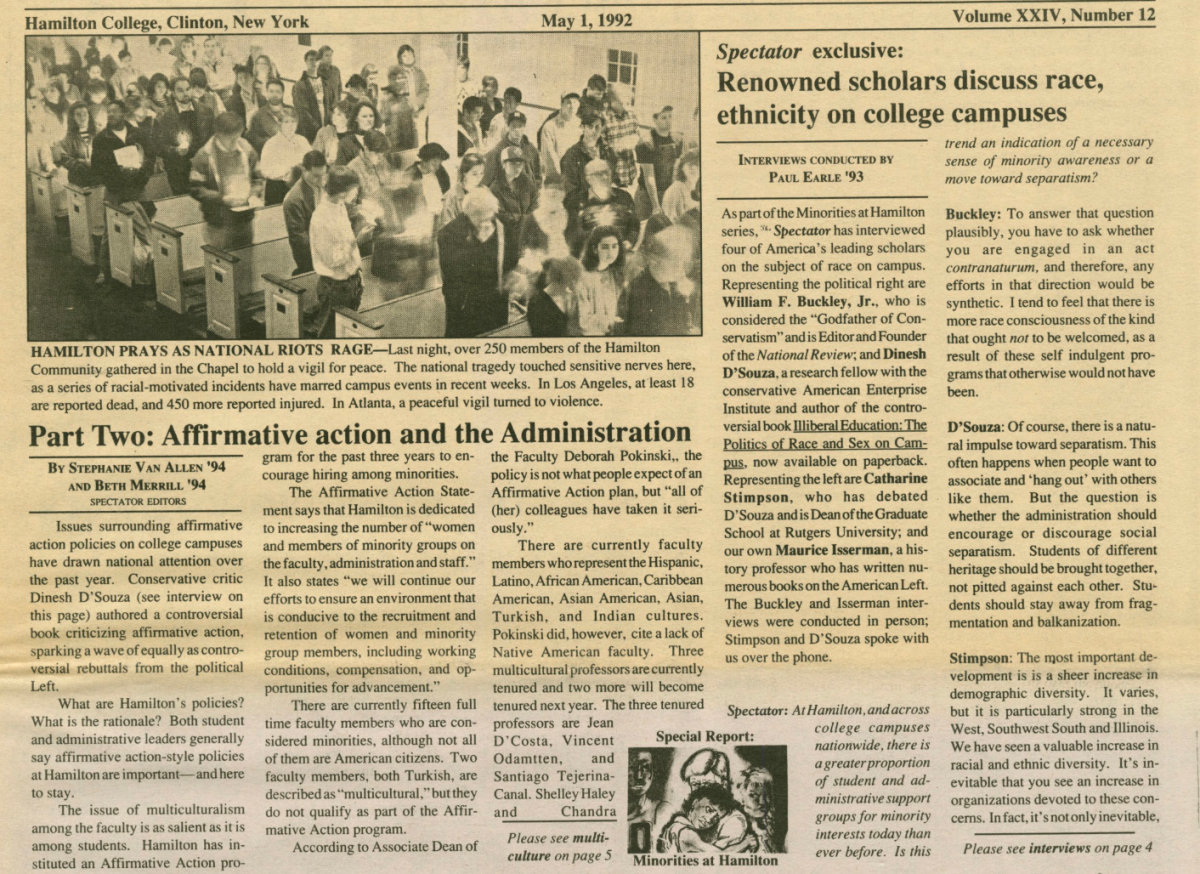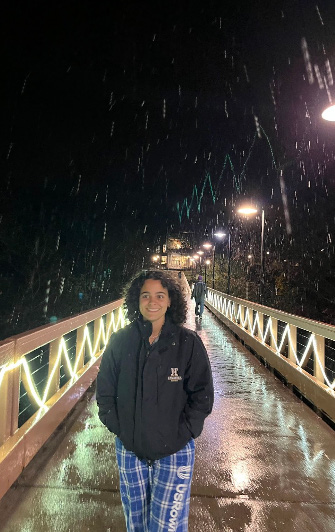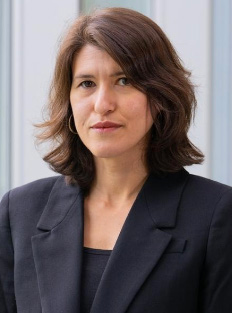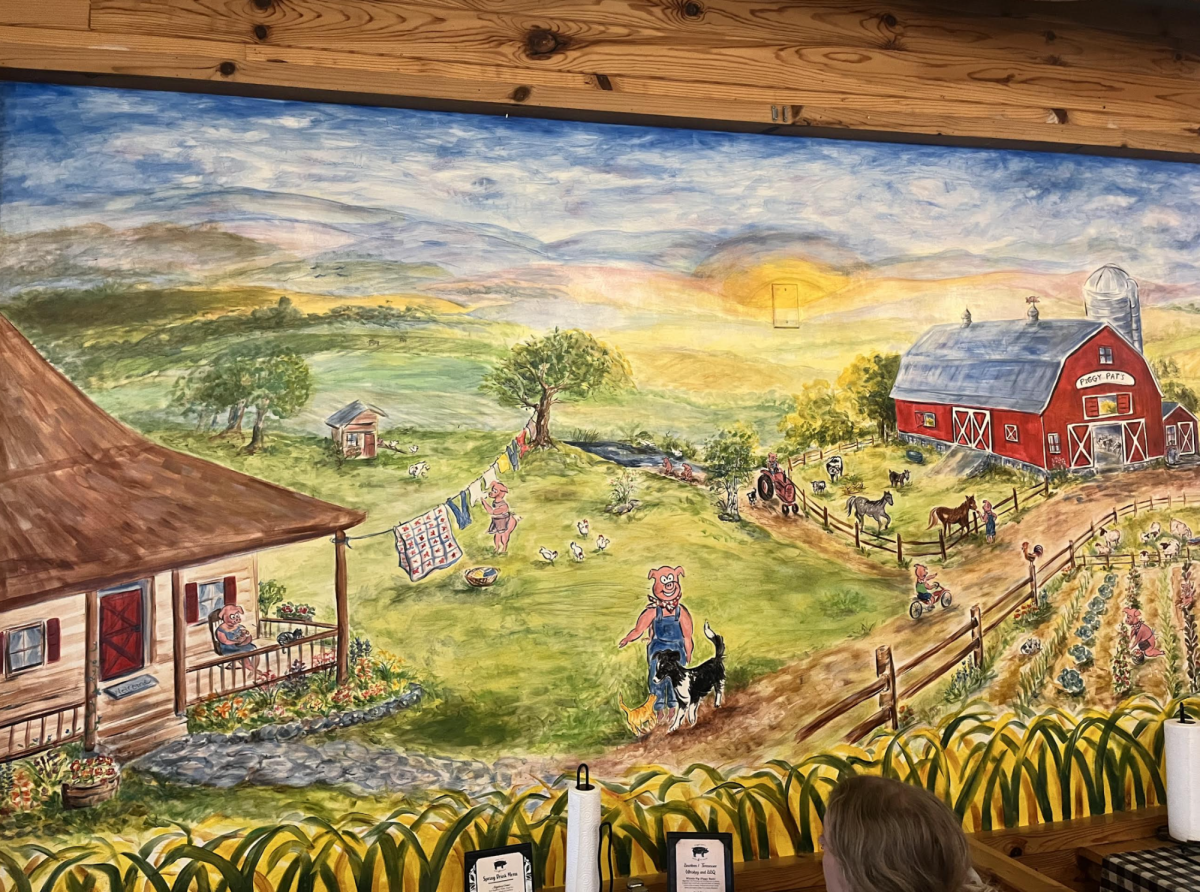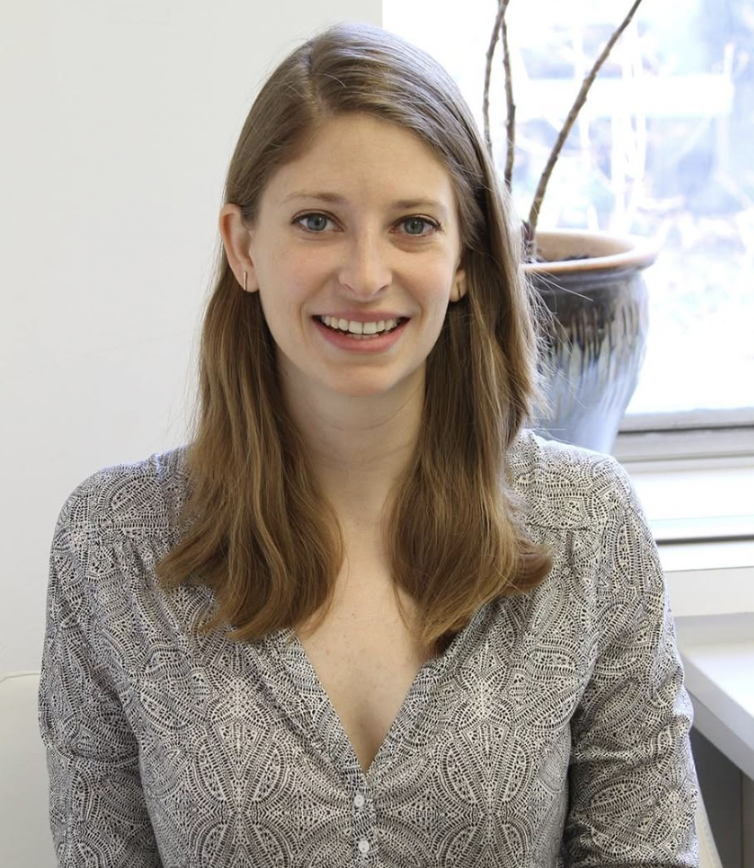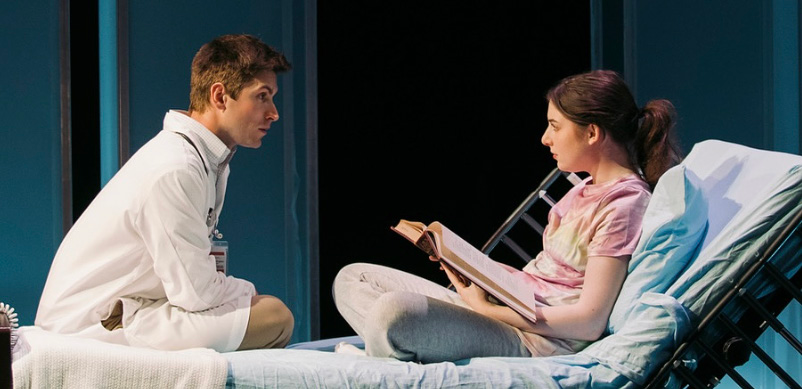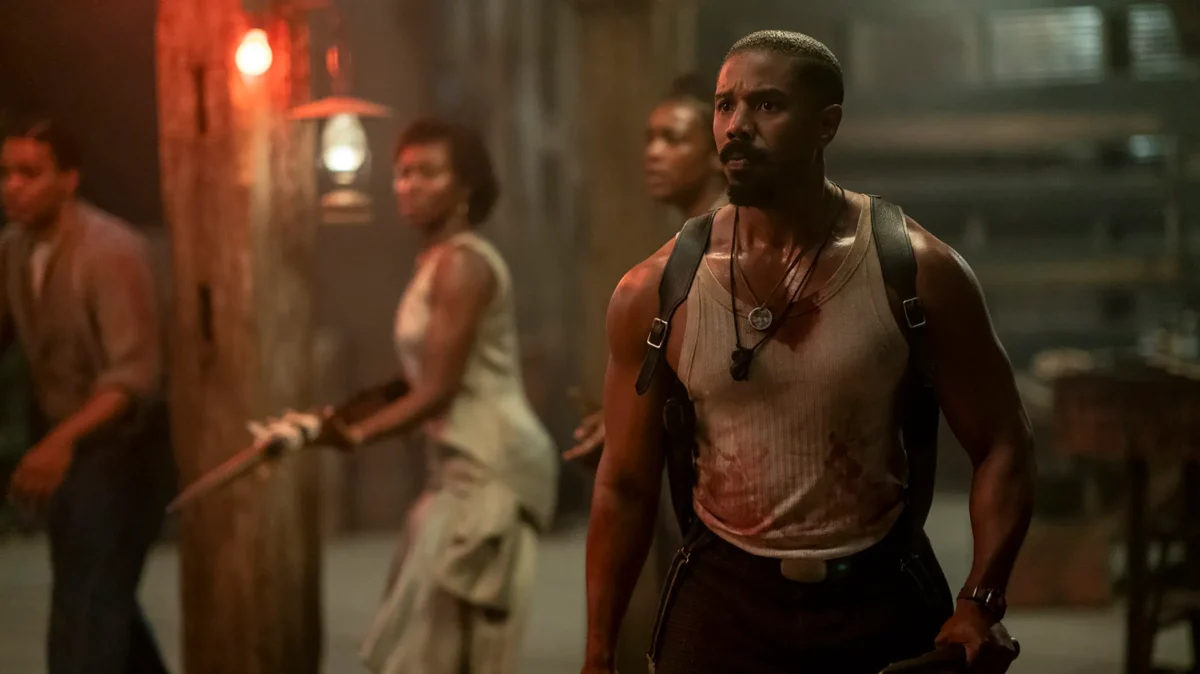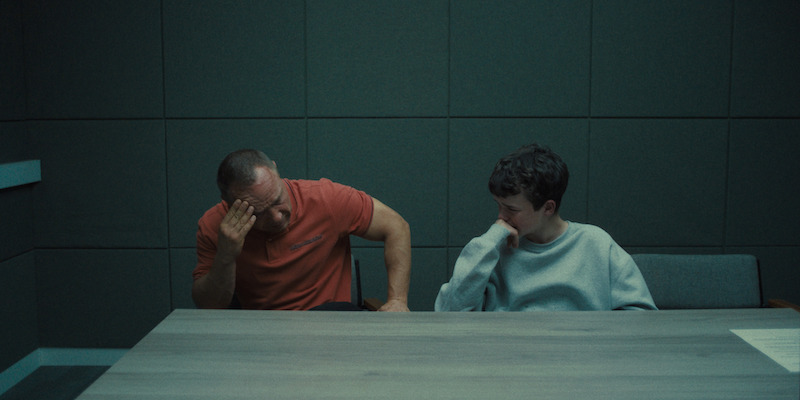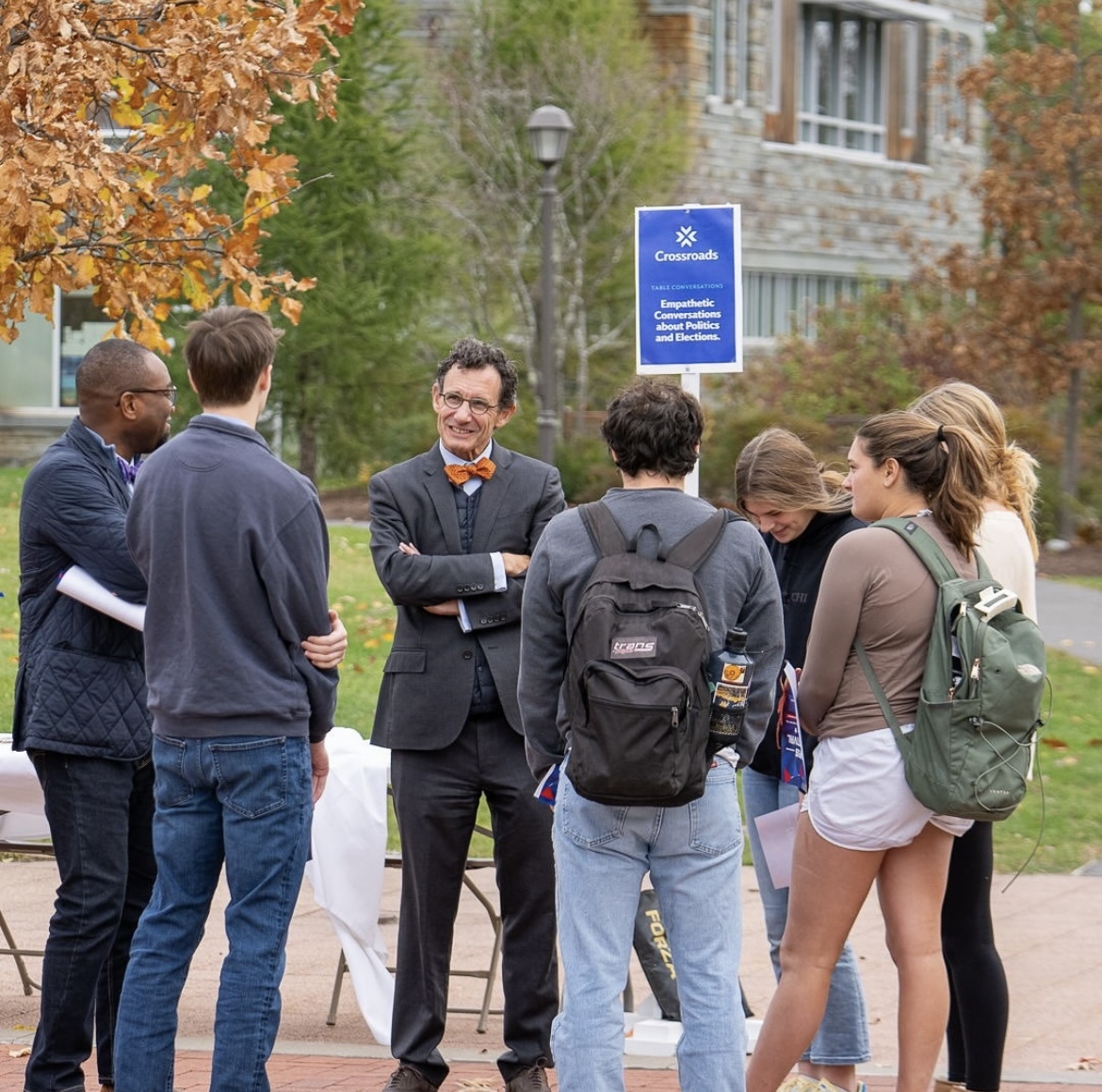On the week of Oct. 6, dubbed the “Week of Rage” by National Students for Justice in Palestine (NJSP), the Hamilton chapters of Students for Justice in Palestine (SJP) and Feminists of Color Collective (FCC) held daily events consisting of a vigil, teach-ins, a protest and a fundraiser. Events started on the 7th, marking the first anniversary of the Hamas attack on Israel and the start of Israel’s siege on Gaza.
The events consisted of a walkout and vigil on Monday, an SJP meeting on Tuesday, an FCC event on Wednesday, a teach-in on Thursday and a protest on Friday. These events represented a variety of different methods to increase campus awareness about the deaths and culture of the Palestinian people and to apply pressure to the college to disclose its investments and divest from the companies cooperating with Israel. These events were not without controversy due to the new protest rules clarifications from Aug. 20, contention over the optics of starting on the anniversary of Hamas’ Oct. 7 attack on Israel and an incident of antisemitism on campus.
The week started with a walkout and vigil on Oct. 7 for deceased Palestinians who would have graduated with the class of ’25. At 11:30 a.m., about halfway through most classes, SJP encouraged students to leave their classes, make a statement about their support of Palestine and head to Sadove. There, they placed stones around the tree in front of Sadove before gathering in a circle to speak the names of 250 Palestinians killed by the Israeli Defense Forces (IDF) since Oct. 7. Placing the stones in this circular style is a Jewish practice, and Scott Levy ’25 explained that, “I am Jewish, and that’s basically the main reason…It’s a special form of honoring life because of its traditional cultural value.”
SJP initially planned to host the Oct. 7 vigil at night, but they merged it with the day-time walkout since they only had the space reserved at that time. The College’s Center for Jewish Life held a separate vigil the night of Oct. 7 at Sadove.
Controversy arose during the vigil when an unidentified student yelled at participating students to “have some respect.”
In response to criticism from students who found the timing of SJP’s vigil insensitive, Hamilton SJP posted a statement on their Instagram account. They said “On this October 7th, we refuse to submit to the narrative that weaponizes October 7th 2023 to ‘justify’ Israel’s ongoing slaughter…we reject all claims that SJP is anti-semitic in any capacity. These claims could not be further from the truth: we are anti-genocide and we stand for liberation.” The entire statement can be found on the @sjphamilton Instagram account.
SJP held a meeting on Tuesday evening and FCC hosted the first event of the Decolonized Spaces series. The meeting acted as a roundtable discussion about colonialism and its impact on Palestine. Topics included the relationship between Israel and Palestine, gender and sexuality in the context of colonialism and Hamilton’s connections to colonialism. After about an hour of this roundtable style discussion, poems from Palestinian authors were read aloud and discussed. Each poem spoke to the experiences of Palestinians in and outside of Palestine and the issues they face regarding communication with those outside of their culture due to racism and colonialism.
According to Victoria Falcon ’27, the goals of the Decolonized Spaces series are the same as FCC’s overall mission: “decolonizing academia at Hamilton College.” “We aim on providing a place to educate the campus on colonialism by deconstructing Eurocentrism and Western hegemonic control,” Falcon told
The Spectator
. The series will continue with future meetings focusing on “Haiti, the Democratic Republic of Congo, the concept of Indigeneity and colonization across the world.”
Partnership between SJP and FCC is common, as the groups collaborated on the walkout earlier this semester and when SJP helped advertise the FCC vigil for Marcellus Williams. According to Derya Arikan ’26, a member of SJP, “our goal in terms of campus activism is to not only have other [organizations] stand with us — with our cause — but also to stand with other [organizations] in their causes. So with events like this, where our goals have overlapped, of course we’re going to collaborate.” FCC’s Falcon elaborated on this idea, “holding our first meeting during the Week of Rage highlights Palestine as a site of active colonization and which has been historically colonized by the Zionist entity. It was significant for us to mobilize and organize during that week.”
Thursday marked the day of an SJP teach-in where attendees had a brief look into Palestinian resistance. Students were given a handout containing poems and letters from Palestinian authors alongside news articles about instances of Palestinian resistance, with SJP’s goal being to give attendees an understanding of how Palestinians have resisted Israel. Students discussed the content, wrote their thoughts on white boards and viewed photos of Palestinians demonstrating their resistance in daily life. Images portrayed children playing games and young adults facing-down tanks with slingshots, a symbol of Palestinian resistance according to FCC.
The Week of Rage concluded with a protest at 12:00 p.m. on Friday. The protest was originally planned to be a die-in on Dunham Green, a type of protest where protesters lay on the ground as if dead, but due to lower turnout, the protest became a chalking outside Buttrick Hall which houses the President’s office. Various pro-Palestine and pro-divestment signs were displayed on the curb while protesters outlined each other in chalk and wrote various messages. Chalk outlines were used as a way of maintaining the spirit of the die-in despite lacking the body count to perform the protest. Messages included a variety of different sentiments, from calling for Palestinian liberation, calling for divestment and calling for Israel’s actions to be disconnected from Judaism. Since the space was not reserved due to the location of the protest moving, these statements and outlines were washed away the next day.
During the chalking, an unidentified student passing by asked if he could join and write a message. The SJP members obliged and gave him a piece of chalk, with which he wrote “I stand with Israel [sic]” alongside a depiction of a five pointed star.
Later on, President Tepper emerged from Buttrick Hall, viewed the chalk messages and drawings and spoke to students for about ten minutes.
During the Week of Rage, a fundraiser was held by SJP for Palestine at FCC’s Blue Vinyl event. This collaboration between the groups was a throughline with their partnership earlier in the week. The fundraiser ended up earning about $270 for Palestinian relief.
Throughout the Week of Rage, several controversies stirred regarding SJP. In its Instagram statement on Oct. 7, Hamilton SJP also brought up the issue that their members were being harassed. They said, “we find that it is actually our own members getting verbally harassed and threatened, our own public installations getting torn apart, our own Instagram posts with comments calling us antisemitic Nazis, our own names and faces published online alongside false accusations of anti-semitism our own existence getting repressed by our institutions.”
SJP member Lee Castevens ’26 said in an interview with
The Spectator
, “I think we see this the most clearly with the protest guidelines, which are highly restrictive [on the Hamilton campus]…And in general we’re seeing such brutal police crackdowns on students that it’s sort of impossible [to speak out]. And there’s just such a clear double standard as far as people fighting for Palestinian solidarity [and] people fighting for black liberation that have these crackdowns that we don’t see for any other student.”
Levy added, “Our budget is, for no reason, severely limited by the school. And… to see other professors at other schools, tenured professors, fired for speaking out about Palestine [and] students, even international students, getting expelled and then deported from the country for speaking out about Palestine [is upsetting].”
When asked about how Hamilton would respond to the harassment of students or faculty based on their support of a group and/ or their racial or ethnic identity, Dean Ngonidzashe Munemo said, “Now that’s always a very difficult situation. Internal groups, we have a little bit more leverage as an institution. If somebody is being targeted by external entities, there is no policy that we could mobilize to engage, to sanction or to intervene when, with respect to external entities, we can provide… We have actually updated some of our procedures and practices for supporting, especially faculty, who might be getting targeted by individuals or organizations.”
President Steven Tepper added, “There’s a bias incident report process. We have to investigate, we have to communicate, we have to support and, if that process breaks down in any way, we need to know that and we need to correct it…You cannot pursue an education if you’re feeling threatened. You cannot. We’re obligated, both morally and legally, and so reporting and communicating when you’re feeling [harassed] is number one. We have a process that we follow, which is fair and should be clear. If it’s not or people perceive it’s not, we need to have a conversation about where the process failed and make corrections.” In regard to potential police crackdowns or other responses to protests, Tepper responded, “If police are involved, then I think we will feel like we have failed. I mean, this is an educational institution. These are members of our community, whether they’re faculty, students, or staff. I mean, I would feel it would be the same as calling the police on my children…We should have conversations. We should care about each other. We should talk through things. So I think there will, there would have to be, many, many conversations and opportunities to work together, to try to navigate this line between expression and the rights of all students to access their education, for the college to continue its business…I think it’s very, very unlikely that we’d ever get to a place where there’d be law enforcement, and I think students would have many chances to work with us, to adjust the protest, to make sure that the rights of other students weren’t infringed.”
On Thursday of the Week of Rage, Adyn Brenden ’27 posted antisemitic graffiti on the Crossroads Community Mural. This graffiti included several swastikas and a message that read “Kill the Jews wherever you find them.” According to NBC, Brenden claims to have written the message to “show people what was underlining the pro-Palestinian movement other than just the surface of what people saw.” For more information on this event, go to page 1.
In response to the vandalism, Arikan said “I don’t even know what to say. It’s just horrible on all fronts, what he did…I’m glad he won’t be able to do that anymore.” She went on to say, “He was also known by many people to bother many social justice movements. He was not affiliated with us at all.” This was repeated in Chief of Staff Gillian King’s message to the campus saying, “[Brenden’s] alleged actions were not associated with any campus group, and there remains no current threat against students or faculty at Hamilton College.”
In consideration of the heightened campus tension and events of the Week of Rage, President Tepper reflected: “I feel like many of us in senior leadership are both in a privileged and extremely difficult position to sit with people who believe very different things, who feel unseen and unsupported, and feel like there are colleagues or classmates who have come to conclusions about them that are untrue. And that’s very hard to listen to because I, and all of us, see the passion and commitment and community in all our students and the things they care about, whether that be political or not political. When they can’t see each other and can’t trust each other it feels like we have work to do. I think it requires us to figure out some creative ways to create the conversation that might not change minds, but it might soften hearts.”

